STOCKPORT, NEW YORK
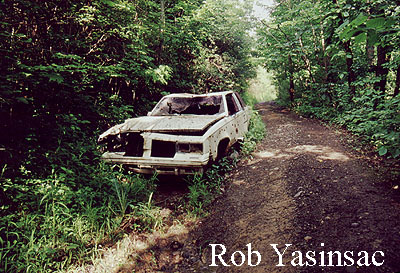
June 14, 2003

In June of 2003, we made our first visit to the site of the Empire Brickyard in
Columbia County to look for ruins noted on a topographical map. The map we
had, which we knew was out of date by at least twenty years, showed a small
community alongside the brickyard. This stretch of
riverfront was in fact used almost entirely for brick-making or ice-harvesting
at the turn of the last century. The only way we would find out if anything was
still there was to see for ourselves.
After parking my car, we hiked down the old road. The
walk was no less fun than my aborted attempt to drive in, being that all the ruts were filled
ankle-deep with water from
the previous night's rain. Amusingly we watched small frogs leap across our path
as we skimmed the edges of these pools. None of the houses remain, nor could we
even find a trace of them, although we did locate some foundation ruins of the
brickyard, but other yards in the valley feature more substantial remains. Along
the way we came across this car, which was riddled with shotgun bullets and
entirely bashed-in. I wonder if its demise began one evening when a young couple
drove down to this secluded location for what would eventually be their last
date together, and the car got stuck in a large rut. Or maybe it was just
intentionally junked.
UPDATE: December, 2004
I returned to the Empire Brickyard on November 27, 2004,
almost a year-and-a-half after my first and only visit. We didn't find the major
brickyard ruins that day, but after a more persistent search I was rewarded on
my second trip. The ruins are not on the scale of an intact yard such as the
Hutton plant in Kingston, but are no less significant. Despite being one of the
more defining industries in the history of this river, very few tangible traces remain
of the buildings where thousands of men made the literal building blocks
of our society.
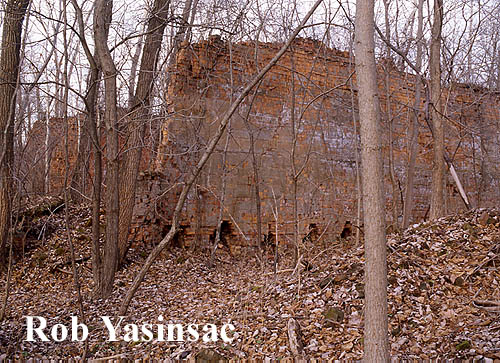
Kiln wall, November 27, 2004.
What survives at the Empire yard are six permanent kiln walls, a few small
foundations, concrete piers for what may have been the railroad spur, and the
ruins of the bulkhead. The kiln walls are the most significant feature, as they
may be the only such surviving remnants of a Hudson Valley kiln outside of an
intact brickyard. Here, bricks were fired at temperatures over 1,800 degrees
Fahrenheit. The heat entered the kiln at arches spaced evenly along the bottom
of the kiln wall. The arches here may be indicative of a coal-fired kiln rather
than an oil-fired kiln.
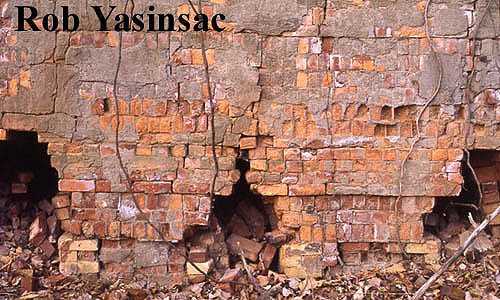
Kiln arches.
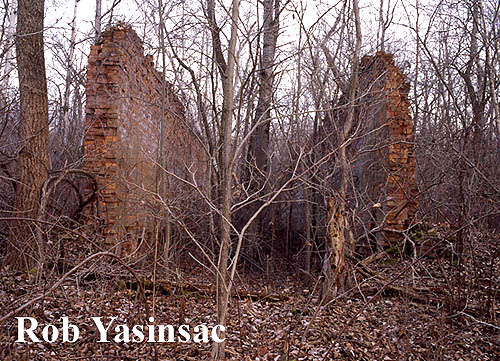
Kiln walls, looking inwards (east).
The Empire Brick Company modernized its facility by 1926, meaning it implemented an overhead gantry crane with a "fork pickup" to set the bricks in the kiln and carry them to the boat, and other machines to enable the use of less man-power. (A heap of metal beams today may be part of the remains of that crane.) However, the yard closed by 1940, due to exhaustion of clay, according to The Great Hudson River Brick Industry, by George V. Hutton. Many plants closed during World War II, as brick not an essential item for the war effort, and after 1945 only a few plants reopened. At the old brickyards the wooden drying sheds have long been carted away for fuel or firewood. the rail spurs have been removed, and the gantry cranes dismantled. Shorelines filled with brick may be the only clue to a site's past, but at Empire there are some ruins to pay tribute to the lost industry and the people who worked here.
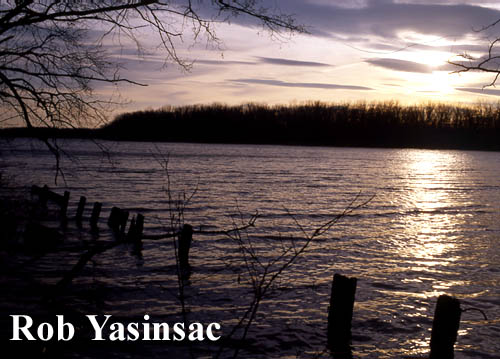
One more Hudson River sunset at a nearly forgotten ruin.
This page and all photographs copyright © 2003, 2004 by
Robert J. Yasinsac.
These photographs are posted for private, non-commercial
viewing purposes only. All other uses prohibited.